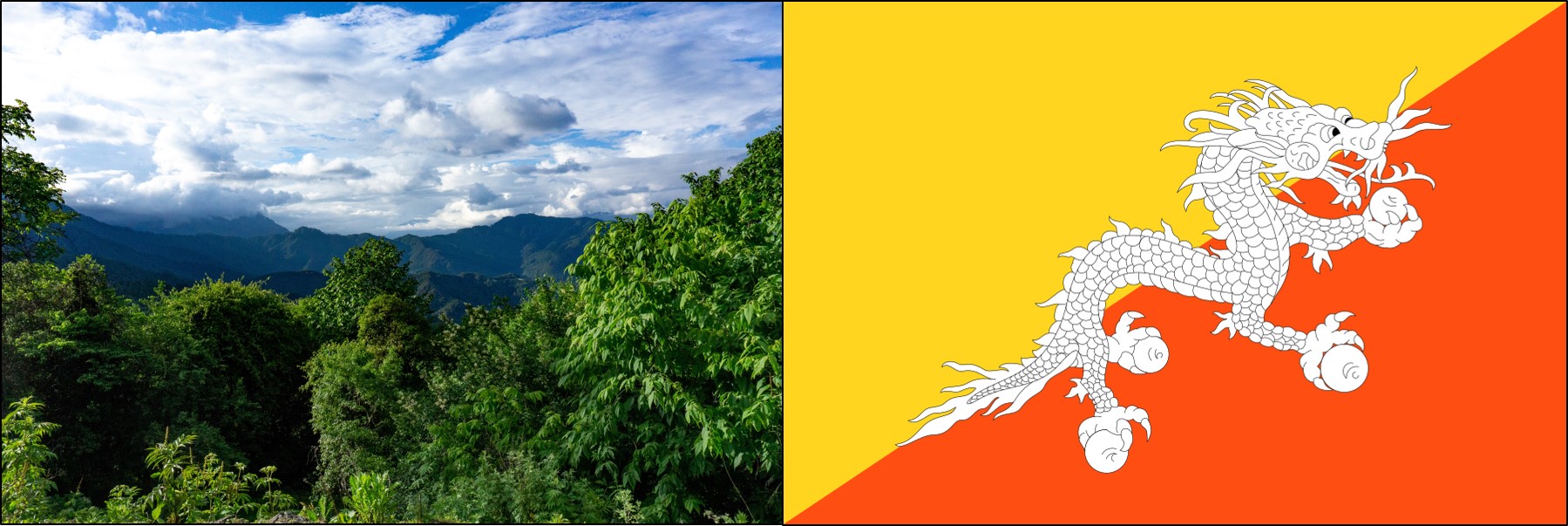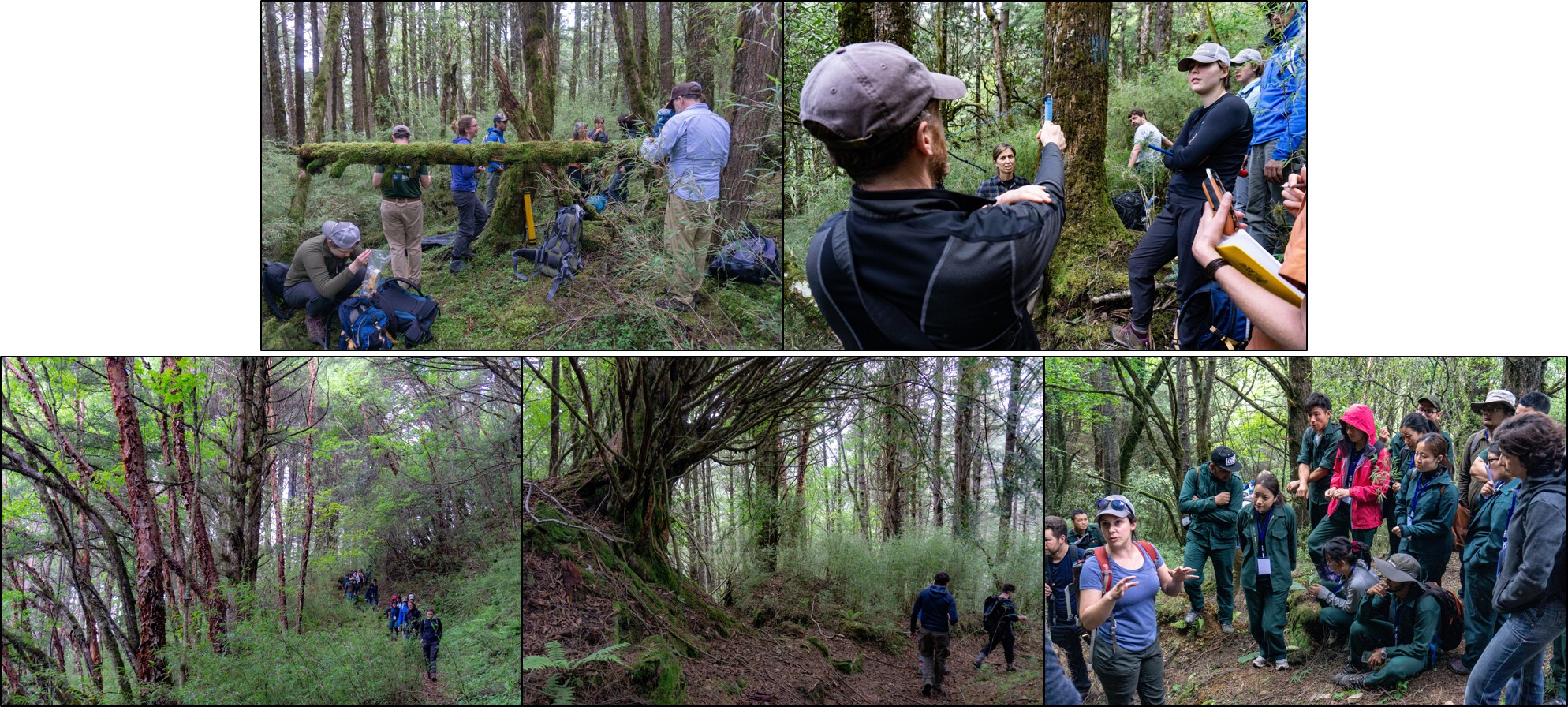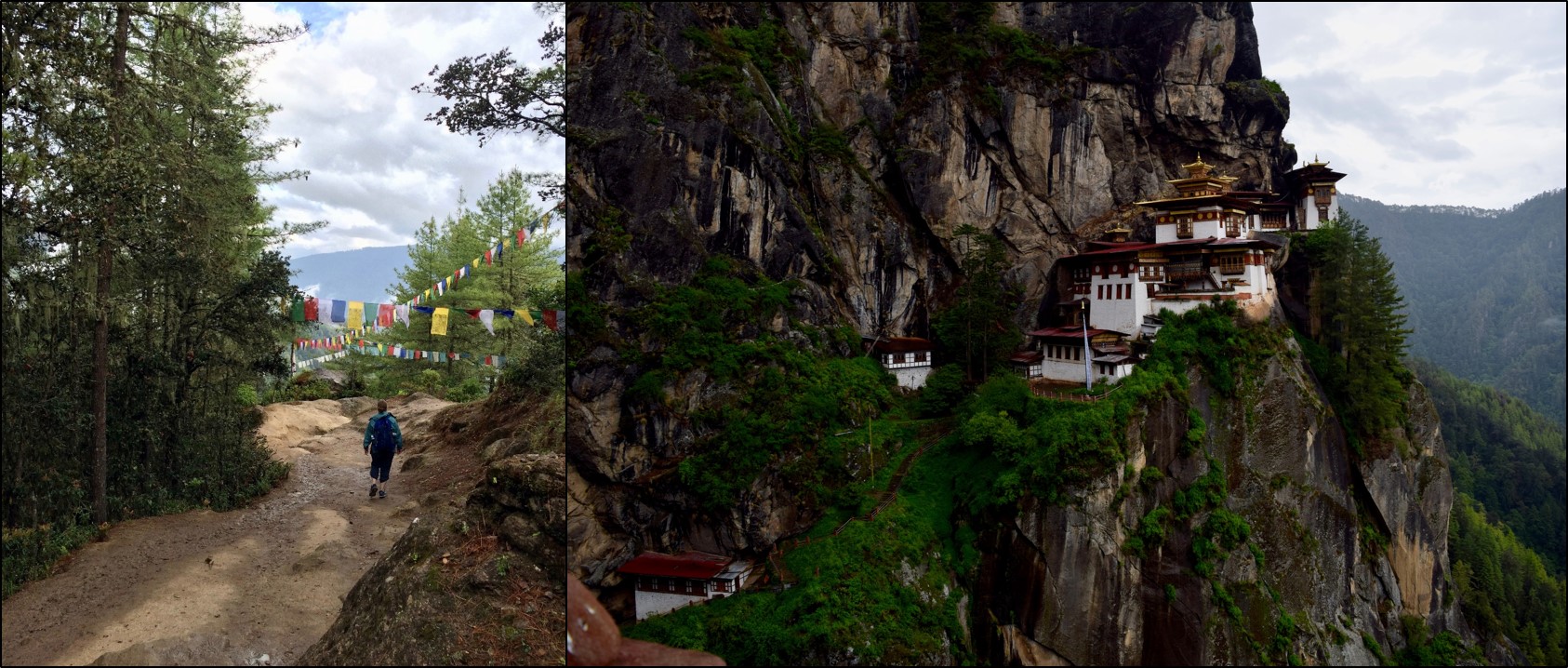
Post by Ann Raiho, Kelly Heilman, and Andria Dawson. This post is cross-listed on the McLachlan lab website.
The 10th World Dendro Conference was held in Bhutan this summer! A Dendro Fieldweek was held the week prior to the conference where individuals learned about dendrochronology and reconstructing climate from tree rings, forest ecology and forest dynamics. PalEON had 4 participants including two grad students from the McLachlan lab. Below are the impressions and experiences from McLachlan members, Ann Raiho and Kelly Heilman and PalEONista, Andria Dawson.
Ann’s Impressions
Bhutan was an excellent destination for World Dendro for many reasons, mainly the country’s unique perspective on forest conservation. Bhutan is the only country in the world that could be considered carbon neutral or even carbon negative because of the amount of forest that the country preserves. Over 70% of Bhutan is forested and will remain so for the foreseeable future. The fourth king set in place a mandate that the country should always remain 70% forests. So many trees! Furthermore, Ed Cook and Paul Krusic have been working in Bhutan for over 25 years and have helped the Bhutanese establish a proliferate tree-ring lab that has been in operation since 2001.

Bhutan is known as the Land of the Thunder Dragon. The Bhutan flag (right) shows an image of Druk, the Thunder Dragon
I attended the Dendro Fieldweek. Around 30 international students and 20 Bhutanese students traveled 14 hours by bus to Bhumthang, Bhutan where there is a field station located next to the first queen’s palace.

Views from the Bus
The field week consisted of field work, tree ring analysis, and presentations of findings. There were groups working on dendroecology, dendrohydrology, and blue light intensity measurements. The dendroecology group was led by PalEONista, Neil Pederson!

Mounting and Measuring Tree Cores

Tree Cookies
We explored the relationship between fir and hemlock along an elevational gradient and found that fir growth may be more sensitive to increasing temperature. At the end of the week everyone presented in their groups, my group’s presentation was about dendroecology and how you can incorporate disturbance history and biomass estimates to tell a story about the forest’s development. I snuck some LINKAGES (forest gap model) runs in to show how ecosystem models can be used in conjunction with tree ring data to learn about limiting resources over successional time scales. Our final night at the field station was spent dancing around a bonfire in traditional Bhutanese fashion (pinky’s locked together to form a circle) and singing karaoke.

Exploring the Forests of Bhutan
Kelly’s Impressions
A traditional Marchang ceremony opened the conference and kicked off a fun dendro-filled week.The first section of talks discussed fusing both forest inventory analyses and dendrochronology methods and included awesome talks from two of our own PalEON members (Ann and Andria Dawson). Throughout the week, I learned about researchers around the world using dendrochronology to reconstruct volcanic events, to explore past human-environment interactions, and to better understand the impacts of earthquakes of forest disturbances. My favorite section was the encouragingly large dendroecology section (I’m biased), which discussed quantifying forest disturbances, the impacts of management and land-use on tree growth, and ultimately exploring how ecological variation might affect growth-climate relationships. I gave a talk in this section titled “Anthropogenic changes impact drought sensitivity across a savanna-forest biome boundary,” which highlighted results showing that both stand structure changes and increases in CO2boundary can impact drought sensitivity at the savanna-forest boundary.
To wrap up the conference, Soumaya Belmecheri gave a stellar Florence Hawley Diversity Lecture that blended both her research reconciling the differences observed between tree ring data and Eddy Flux data and an eloquent call for supporting greater diversity in dendrochronology. In between our packed conference schedule and before leaving Bhutan, we squeezed in some culture and exploration. My favorites were the traditional dancing at the conference banquet, venturing up to the massive Buddha, trekking up to Taktsang Buddhist monastery (aka “Tiger’s Nest”) with Andria, and eating all the spicy ema datshi and momos possible!

Some short hikes brought us to amazing views! Left: views from the large Buddha temple in Thimphu. Middle: Buddha Dordenma statue. Right: A large prayer wheel on the way up to Taktsang monastery near Paro. Look closely at the prayer wheel and you’ll see one of the friendly dogs that accompanied us on our hikes and always found the best napping places!

Hiking to Taktsang Monastery (Tiger’s Nest) with Andria. Taktsang monastery is located on a cliffside around 10,000 ft elevation. We enjoyed the pine forests, prayer flags, and views of the valley on the way up!
Andria’s Impressions
Bhutan has undergone a wave of modernization over the last 40 years. They are now at a point in time where they have the infrastructure to conduct and disseminate scientific research. Ed and Paul have been working in collaboration with Bhutanese colleagues for some time; however, there is still a lot to learn about the forests of Bhutan (and how they fit into our global perspective of the biosphere). Our Bhutanese colleagues at the conferences continued to emphasize their commitment to collaboration with international colleagues.
I want to thank the people of the Kingdom of Bhutan for welcoming us. Their generosity and profound appreciation for the environment and all living things has had a profound impact on my perspective of life and humanity. Bhutan, you are far away (from North America) but never forgotten.

Left: PalEON Pals, Middle: Traditional Dancers at the Closing Banquet. We all joined later!, Right: A Good Reminder To Go Home With
